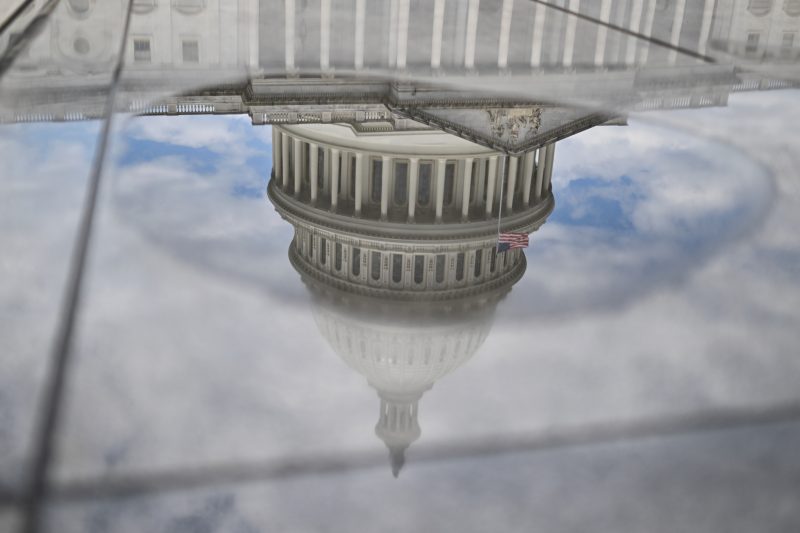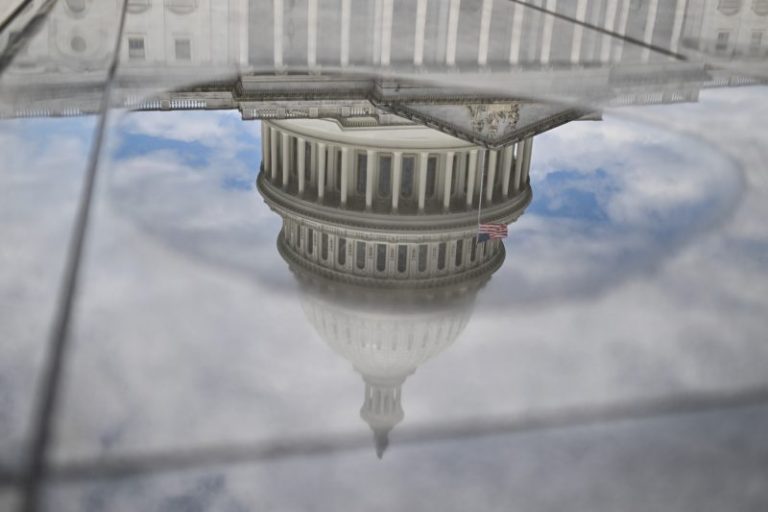
The Senate’s first vote on Wednesday started promptly, a few seconds after its scheduled time of 11:30 a.m. for the “15-minute vote.”
Everyone around the Senate — including the senators, their aides, the Capitol Police — knows that the suggested time constraints are a joke. Votes almost always take far longer than their allotted 15 minutes, with no one enforcing the clock.
This one ended more than an hour later.
A consistent topic of discussion around the chamber, this voting lethargy has prompted an increasingly large bipartisan bloc to plead for a more disciplined way to vote.
“It’s a ridiculous waste of time, of all the senators’ time. And the fact that the leadership is not willing to force a time limit that people can understand is too bad. And I’m talking about leadership on both sides,” Sen. Jeanne Shaheen (D-N.H.) said Thursday.
The world’s greatest deliberative body, as senators like to call their club, is not living up to that moniker: they’re voting less often and taking longer to hold those roll calls, while debating the issues far less often.
The topic of drawn-out votes often generates a shoulder shrug from leadership, as if it’s both a longtime tradition that just can’t be fixed and, besides, it’s really a petty concern. But the protracted pace is an entirely new phenomenon and, as every first-year senator learns, time is senators’ single biggest commodity.
Senators manage their daily schedule around votes: when to attend and leave committee hearings; when to schedule meetings with constituents and policy experts; when to reserve time for floor speeches on critical issues; and, of course, when to attend fundraisers to boost their reelection campaigns.
This chaotic vote schedule has upended that regular flow. Moreover, it’s symptomatic of a broader, longer-term transformation of the Senate away from being a body that debates the grand issues and instead empowers top leaders to make its decisions.
Robert X. Browning, a political-science professor at Purdue University who serves as the director of archives for C-SPAN, has catalogued congressional action in a meticulous, revealing way.
At this stage of the 114th Congress, in late June 2015, the Senate had devoted more than 255 hours to debate and speeches, more than 42 percent of the time the floor was open for business. By late June 2017, about 440 hours had been dedicated to debate, more than two-thirds of all Senate action.
This year, senators have engaged in less than 60 hours of debate during the 118th Congress — less than 14 percent of their time on the floor. Conversely, the time it takes to hold votes has soared in recent years, from just 85 hours as of late June 2017 to 148 hours through the middle of this week, according to Browning.
Think of the Senate’s floor action as increments of one hour.
So far this year, senators have spent the equivalent of a little more than eight minutes of that hypothetical hour debating the issues, while they spent nearly 22 minutes of that hour going through roll-call votes.
And, to be clear, this Senate isn’t actually casting more votes on more policy. No, at this stage two years ago, after Majority Leader Charles E. Schumer (D-N.Y.) took charge, the Senate had held more than 250 votes.
After gaveling out Thursday for an 18-day summer recess, the Senate has held just 171 votes this year.
Browning’s data show that this year’s Senate was in session a little more than 400 hours so far, easily the least floor time at this stage of the last five Congresses.
It’s a big letdown for advocates of the Senate, who watched the chamber shrink in impact late last decade only to see a revival in the 117th Congress. Throughout 2021 and 2022, bipartisan Senate gangs produced a bumper crop of new laws funding infrastructure, guaranteeing marital rites to same-sex couples and enhancing background checks on gun purchases.
This year, with Republicans now ruling the House, Senate Democrats trimmed their sails of legislative ambition knowing most of their proposals would not clear the House. In the last two months they advanced just one bill of their own for a legislative debate: a measure to conduct a study on the benefits of cannabis for treating military veterans, which failed to clear a GOP filibuster.
The coronavirus pandemic started the Senate down this road.
While instituting social distancing measures, leaders agreed to allow votes to stay open longer to have fewer senators congregating on the floor.
Last year, long after senators had been vaccinated and the pandemic receded, a bipartisan group of nearly 70 senators, led by Sen. Thom Tillis (R-N.C.), sent a letter to Schumer and Minority Leader Mitch McConnell (R-Ky.) demanding shorter vote periods.
“Votes are often left open well beyond the allotted time, frustrating a majority of members from both sides of the aisle. Often, the outcome of the vote is not in doubt,” Tillis wrote on behalf of the group.
The signatories to the letter even gave their consent to just gavel a vote shut if one of them was the wayward senator who hadn’t voted.
To no avail, votes lingered.
After the November midterm elections, Shaheen and Sen. Jeff Merkley (D-Ore.) offered additional proposals during internal caucus deliberations.
They asked leaders to end votes even with senators missing, if the outcome wouldn’t be impacted, and, in one case, asked Schumer to provide a weekly tally sheet of which senators showed up late and caused delays.
What happened with those proposals? “Nothing,” Shaheen said.
Instead, votes this year are taking longer than any time in recent history. Wednesday’s session epitomized this.
The first vote wrapped up at 12:32 p.m. — a failed attempt to override President Biden’s veto of a bill to reduce environmental regulations — and the next vote immediately started.
An hour later, the gavel fell and the Senate adjourned for a brief recess.
Just after 2:15 p.m., the Senate went on a 78-minute adventure, with a long stretch during the late portion of the vote in which 20 or so colleagues gathered in the center of the chamber. They had already voted but were just waiting for the last senator to arrive, so that they could in turn cast their votes on the next roll call and be finished for the day.
Finally, Sen. Bernie Sanders (I-Vt.) showed up and gave the Democrats a 50th vote to confirm a federal judge, and Sen. Deb Fischer (R-Neb.) gave a sustained round of applause, almost a mocking tone toward the last to arrive.
The next vote finished almost 50 minutes later. All told, over nearly five straight hours, the Senate held four roll-call votes. The only time left for speeches and debate came during the dinner hour, when most senators had events to attend across town.
Senate leaders privately blame the rank-and-file senators for their lackadaisical approach to votes. Senators often linger at meetings across the street in their office buildings or at fundraisers downtown, sometimes gaming out their arrival for the end of one vote and the start of the next.
On June 1, Schumer pleaded with colleagues to knock out 11 votes in short order so they could approve the debt ceiling-and-budget bill that night to quickly send the legislation to the White House and avert a potential credit default.
“We are limiting each vote to 10 minutes,” Schumer said. “So I ask my colleagues to stay in their seats or near the floor during the votes. Let’s keep this process moving quickly.”
The legislation crossed the finish line in a little more than three hours, considered a victory of sorts.
Merkley views this Senate atrophy as a broader issue. Big bipartisan debates are now dwarfed by the Senate’s assembly-line approach to focusing mostly on confirming presidential nominees.
Attempted reforms in the 1970s got turned upside down in the hyper-polarized climate of the last decade. Republicans started forcing every procedural hurdle possible on President Barack Obama’s nominees — only to have Democrats return the favor during the Donald Trump presidency, followed by GOP senators now doing the same to Biden.
“It’s a piece of that puzzle, but it’s really the most recent small piece of a Senate that’s slowed down enormously,” Merkley said.
Shaheen doesn’t plan to accept the new normal. She keeps bringing up the issue whenever she has the chance.
“We saw, when we were working on the debt ceiling debate, that we can do this in a timely way if there’s a commitment,” she said.


Comments are closed.